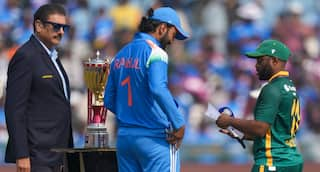Aditya-L1: When Will India's First Solar Mission Reach Its Destination? What Path Will It Take? All You Need To Know
Aditya-L1: ISRO aims to place India's first space-based solar observatory in a halo orbit around a special point that lies along the Sun-Earth line. This point is the Lagrange point 1 (L1).

Aditya-L1, India’s first solar mission, will be launched on September 2, 2023, at 11:50 am IST, atop an XL-PSLV (Polar Satellite Launch Vehicle) rocket, from Satish Dhawan Space Centre, Sriharikota, Andhra Pradesh. The Indian Space Research Organisation (ISRO) aims to place the space-based solar observatory in a halo orbit around a special point that lies along the Sun-Earth line. This point is the Lagrange point 1 (L1). It is a special point in space where the gravitational forces exerted by the Sun and the Earth on the Aditya-L1 spacecraft will be balanced, allowing the observatory to remain in a stable position, minimise energy expenditure by saving fuel, and obtain an uninterrupted view of the Sun for the entirety of its mission life.
Aditya-L1 will study the different layers of the Sun, the mechanisms of coronal heating and coronal mass ejections, and magnetic fields around L1.
MUST READ | Aditya-L1 Will Be Placed 1.5 Million Kilometres From The Earth. Know The Significance Of This Distance
How long Aditya-L1 will take to reach its destination, and what its path will be like
Aditya-L1 will take about four months to reach L1. The spacecraft will be located 1.5 million kilometres from Earth, and about 148.5 million kilometres from the Sun.
Aditya-L1's trajectory towards the Sun will be a complex one, and will involve several phases. The path is not straight, and will include a lot of twists. After being launched, Aditya-L1 will be placed in a low-Earth orbit, which will be circular. This stage is known as the Earth-centred orbit transfer.
MUST READ | Aditya-L1: What Makes India's First Space-Based Solar Observatory To Study The Sun Unique
Aditya-L1 will perform three Earth-bound orbit-raising manoeuvres, or perigee burns, to ensure that after each step, the orbit becomes more elliptical. In the case of Chandrayaan-3, orbit-raising manoeuvres were performed to ensure that after each perigee burn, the orbit became more circular. Aditya-L1 will use Earth's gravitational field to perform these manoeuvres.

After the three orbit-raising manoeuvres, Aditya-L1 will exit Earth's gravitational sphere of influence (SOI), and start travelling towards L1 using onboard propulsion.
The stage after exiting Earth's SOI is known as the cruise phase.
ALSO READ | Everything About Aditya-L1
"After Aditya-L1 exits Earth's sphere of influence, the Sun's gravitational pull will take over. This part takes some time. Once that is done, Aditya-L1 will enter the cruise phase," Manish Purohit, a former ISRO scientist, told ABP Live.
Describing the cruise phase as a slow and steady ride through space, Purohit explained that the phase will help Aditya-L1 reach the special spot required for approaching L1.
Once Aditya-L1 reaches the special spot, the spacecraft's engines will be used to change its path, said Purohit. "This new path takes Aditya-L1 to the L1 halo orbit around L1."
According to Purohit, it will take Aditya-L1 about 109 days to reach the L1 halo orbit.
MUST READ: EXCLUSIVE | Chandrayaan-3 Is A 'Huge Confidence Booster', Can Help Reverse Brain Drain, CERN Scientist Archana Sharma Says
What happens after Aditya-L1 reaches its destination?
After Aditya-L1 inserts itself into the halo orbit around L1, and stabilises itself, the spacecraft will start orbiting L1. This is a special point where the gravitational pulls from the Earth and the Sun balance each other out, as a result of which Aditya-L1 will simply hover around L1.
“Once the spacecraft gets to this Lagrange point, it will not just stop. It is like a slow and graceful dance around that point. But here is the catch – there is no physical object there, like a planet or moon. Instead, the spacecraft moves because of the tugging from the Sun's gravity and Earth's gravity,” said Purohit.
ALSO READ | Chandrayaan, Apollo, Artemis, Luna – Successful Moon Missions Launched Till Date
The former ISRO scientist also said that these orbits have a cool name: halo orbits. “They are special paths that are not perfect circles or ovals. They are more like lopsided shapes called lissajous figures. These orbits are really big – imagine a distance of 13 lakh kilometre-distance between the farthest points. NASA-ESA SOHO mission uses similar orbits.”
The NASA-ESA Solar & Heliospheric Observatory (SOHO) studies the Sun's internal structure as well as the outer atmosphere, and the dynamics of the solar winds. It was launched in 1995.
When two simple harmonic motions or oscillations that are perpendicular to each other are superimposed, a curve is formed. This is known as a Lissajous figure.
Aditya-L1, which is equipped with seven payloads, is expected to operate around L1 for five years.
ALSO READ | Soft Landing To Trans-Lunar Orbit: Chandrayaan-3 Jargons Explained







































